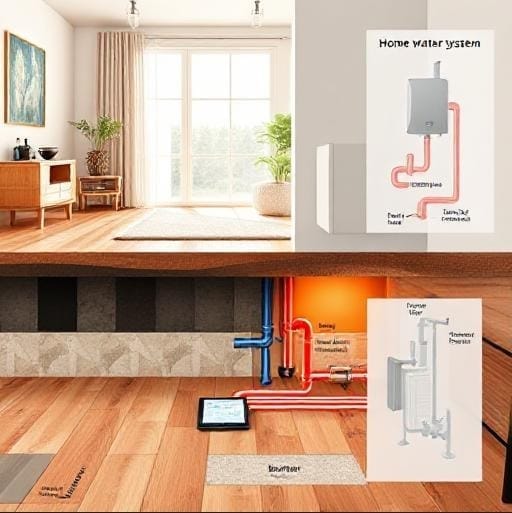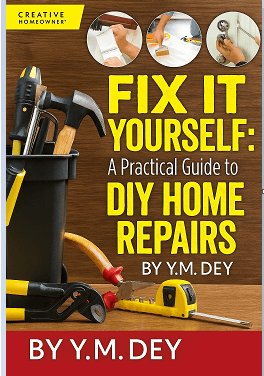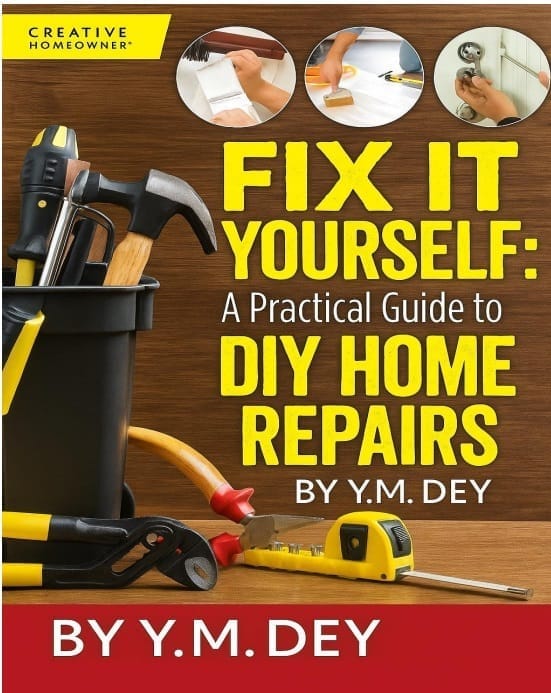Essential Guide to Shutoff Valves, Plumbing, and Home Electrical Systems

Main Shutoff Valves (Stopcocks)
Before disaster strikes, find out where your main shutoff valve is and if it works. Make sure you know where all your important main shutoff valves (stopcocks) are, because in a plumbing crisis, you will need to stop water coming into your property immediately. The best way to do this is to turn off your main shutoff valve.
The main shutoff valve isolates (shuts off) the main water supply from the water that runs through your home. If you are in an apartment (flat), this may be in a communal area such as the hallway, but in most properties it is located near the first source of main water (usually the kitchen sink taps). It’s important to locate and test your main shutoff valve, because if you have a leak, you will want to isolate the source of water coming into the property. By turning off the valve, you will stop any further water from coming into the property, thereby limiting any further damage from a leak.
Because main shutoff valves are often left unused for years, they can frequently seize up and be unable to turn, so it’s a good idea to find this out before an emergency strikes. This is a lifesaver—and can save you an awful lot of money on an emergency plumber. So put this down now, yes, now, and find your main shutoff valve (stopcock). Turn it clockwise to turn it off and counterclockwise (anticlockwise) for on.
How to Handle a Stuck Valve
Your main shutoff valve (stopcock) will look something like this.
If a main shutoff valve hasn’t been used in a while, it can be really stiff, so spray a bit of lubricating oil in the joints, leave it for 10 minutes to let it work its magic, and you should be able to turn the valve. If you can’t, then you’ll need to get the valve replaced. It’s best to find out now and get it replaced before you actually need it in an emergency.
Replacing a main shutoff valve is a specialty job for an experienced plumber. It will involve freezing pipework or turning the water off in the street. Outside any property is a water main shutoff valve that can be accessed through small panels in the street—you would need a special key to turn this—it’s probably something you won’t want to tackle yourself, especially if you are in an apartment, since you will be turning off the water to the whole building.
DIY Hacks
Universal method for tightening and loosening: clockwise to tighten and counterclockwise (anticlockwise) to loosen. Or remember, “Righty Tighty, Lefty Loosey.”
Pipework
Inside your property is a series of pipes that carries the water around and feeds it to different appliances, such as your shower or toilet. It might be sensible to make sure that each appliance has its own shutoff valve (it’s also known as a service or isolation valve).
This will allow the water to any appliance to be isolated, and work can take place without having to shut off the water main (mains water). This is very handy if you find you have a leaky toilet or shower, as you can turn this valve on and off to limit damage and wasted water until the leak is fixed.
The pipes running through the house will carry cold water in one set and hot water in another. Cold water will be directed to your hot water system (furnace/boiler or tank), and then it will come out into a separate set of pipes that carries hot water around the property.
Waste Pipes
Wastewater is carried away from plumbing fixtures through large plastic pipes to the main drainage system … And from there, no one needs to know!
The Electrical System
Although we take it for granted, electricity is a complex system that needs a level of understanding before we can safely make any electrical changes to our homes. So how does it work?
Electricity is made in a power plant where fossil fuels (such as coal) are used to turn water into steam. This steam powers a turbine that spins a big magnet inside a copper wire. This heat energy is converted to mechanical energy that is then converted to electrical energy—SIMPLE!
From the power plant, the electric current runs through the power lines to a substation, then to an underground transformer or pylon. From here electricity comes into your home through a service box, where your meter is located to measure how much you use. Wires take electricity around your home, powering your lights and all your other electrical appliances. There are multiple power circuits in your home, usually separated into lighting and power. There may also be separate supplies to appliances that require a lot of current.
Recent Posts
1. Beginner’s Guide to DIY & Home Repair
2. Time to Gear Up for DIY Projects
3. Essential Guide to Shutoff Valves, Plumbing, and Home Electrical Systems
But as I explored the world of DIY, I realized most online resources were either too advanced or too expensive or assumed the reader had years of experience and a fully equipped workshop. That gap inspired the launch of Gear For DIYers—a practical, beginner-friendly resource tailored to everyday homeowners and renters looking to build skills and confidence, one project at a time. Click here for more info
Grab Our Curated Personalized Gift Guide—100% FREE
If you’ve ever paid for simple home repairs or waited weeks for a handyman, you’re not alone. That’s why I created this free guide with practical, step-by-step instructions for fixing common issues around the house — from leaky faucets to squeaky doors and more!
Say goodbye to costly service calls and hello to confident DIY repairs.
Just tell me where to send it, and I’ll deliver
it straight to your inbox—100% FREE.

Grab Our Curated Personalized Gift Guide—100% FREE
If you’ve ever wasted hours scrolling or wandering through stores with no luck, you’re not alone. That’s why I created this free checklist of unique, personalized gift ideas for every occasion — Father’s Day, housewarmings, graduations, birthdays, and more!
Say goodbye to guesswork and hello to thoughtful, meaningful gifts.
Just tell me where to send it, and I’ll deliver
it straight to your inbox 100% FREE.

Learn how to handle home repairs like a pro with Fix It Yourself: A Practical Guide to DIY Home Repairs.
💰 Save money on costly repairs
🛠️ Gain valuable skills you can use for life
⚡ Fix problems fast with step-by-step guidance
🏡 All from the comfort of your own home







